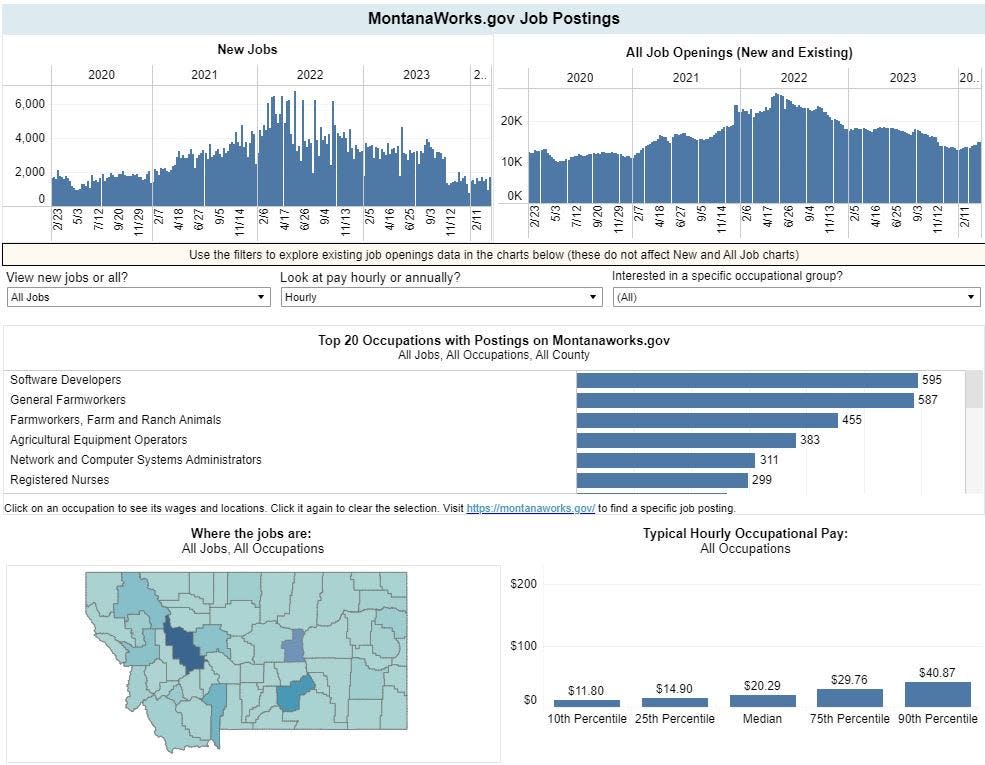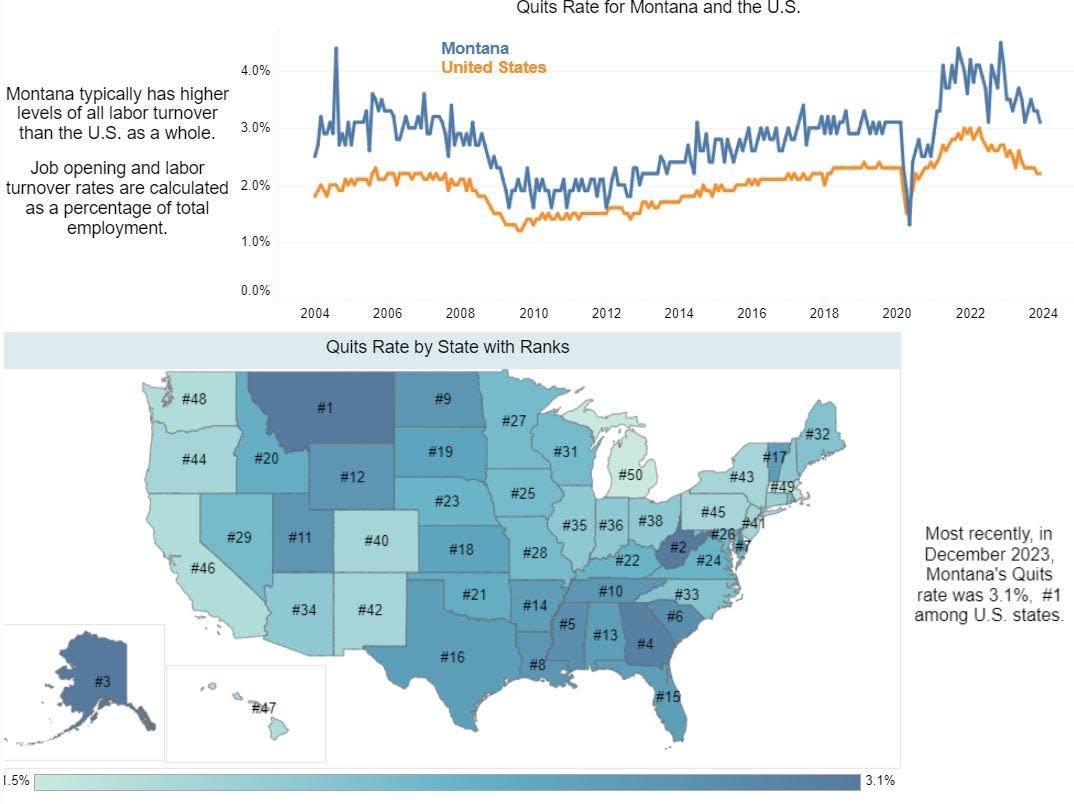Labor statistics show growth, but rising unemployment number in Cascade County and others

Newly released data from Montana’s Department of Labor and Industry (DLI) show that employment opportunities in Montana are cooling but remain above the national average. Montana now sits in the unusual position of having both more workers entering the labor force while simultaneously experiencing a rising unemployment rate.
“Montana’s total employment and labor force (continues) to grow, a sign that Montanans are continuing to join the workforce even with a record number of people working in the state,” the report states. “Montana’s unemployment rate rose to 3.4% in February as more workers entered the labor force.”
During the same period the national unemployment rate has risen to 3.9%.
In a county-by-county comparison, Cascade County measures in at the middle of the pack. According to DLI statistics Cascade County added 163 jobs in the prior year, a 0.9% increase totaling of the 38,252 jobs currently filled across the county. Yet, unemployment has risen slightly within the county, now surpassing the state average.
The odd confluence of increasing job opportunities juxtaposed upon increasing unemployment is a factor of rising population. Montana as a whole has seen a slow growth in population over the past year following the end of the COVID-19 pandemic. U.S. Census Bureau statistics reveal Montana has now returned to pre-pandemic standards with a less than 1% year-on-year annual increase in population. Yet as more jobs become available an even larger number of potential workers are having greater difficulty in finding them.
Job gains could be offset by the rate of inflation. According to Labor and Industry numbers the greatest price increases in Montana in the past been for rents and energy. The rise in food prices has now subsided, but combined the cost of living has risen by 3.2 % over the past year
Among Montana’s most populated counties, Cascade County is ahead of the trend. Bozeman and surrounding Gallatin County is one of the economic drivers of the state. DLI numbers reveal the Bozeman area has added more than 1,000 jobs in the past year and is down to just a 2.5% unemployment rate. At the opposite end is Missoula County which has lost close to 300 jobs in the past year and now has unemployment above 4.0%.
Central Montana remains in the middle. Surrounding counties like Lewis and Clark, Choteau, and Judith Basin have all exceeded job gains over population losses, while Teton, Phillips and Lincoln counties are struggling to hold their own. Overall central Montana’s remains five points above the average of 3.9%
Employment within the state’s native American communities is the exception. Unemployment across Montana’s seven reservations hovers just above 8.6%, more than twice the statewide average and a point of concern for all. Among the tribes the Confederated Salish/Kootenai are doing the best with a 5.4% unemployment rate, while nearly 1 in 8 tribal members on the Fort Belknap Reservation can’t find work.

A surprising side note to the employment equation is the number of workers who voluntarily leave their positions. According to U.S. Census Bureau data Montana ranks first in the nation for “quit rates.” More than three in 100 non-farm workers in Montana voluntarily leave their jobs each year, nearly three times the national average.
Many of these jobs are agricultural, a sector which traditionally sees a high turnover rate. However, it becomes a question of which jobs can support a family when the cost of rents, fuel, and groceries continue to rise.
This article originally appeared on Great Falls Tribune: Montana employment cooling, with more workers entering labor force
